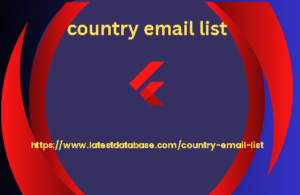A complete This article is about the complete guide to keyword analysis and research. This article explains the overall idea of Google SEO keyword analysis, so you will never have to worry about it again! Although the topic is old, it is very dry.
Keyword research and analysis is the foundation of SEO. Only by choosing the right words and placing the right words can the SEO effect be twice as effective with half the effort. The process of keyword research is also the process of exploring user needs, exploring traffic and understanding the industry. Everyone also knows the importance of keyword research, but do you have the following questions about keyword research?
- Are you confused about keyword research and don’t know where to start?
- Don’t know how to find all the accurate keywords?
- There are too many words and it gives me a headache to read them. I don’t know how to group them effectively?
- Are you going to do this word? Can you do it?
- Which pages and content should be used to carry the keywords?
- Don’t know how to layout keywords to get more SEO traffic
This article is centered around the above questions, helping everyone to have a systematic understanding of keyword research and analysis, better understand and use keywords, and thus help the website obtain better rankings.
1. Keyword foundation, deep understanding of keywords
1. Keyword classification – based on search intent
Behind each search term is a user’s search intent, and it is critical to understand this: what content does the user need to find and what problem does he or she want to solve?
According to the AIDA funnel theory of marketing, users have different psychological stages in the purchase decision-making process. AIDA is the abbreviation of the four English words Attention, Interest, Desire, and Action, which represent the different key goals that marketers should take for users at different stages. According to the different stages of users, keywords can be divided into the following categories.
Our database provides accurate and updated email addresses for individuals and businesses on country email list across the country, allowing you to reach your target audience quickly and effortlessly. With our email list, you can easily tailor your marketing campaigns to specific areas, cities or even postal codes, so you can reach the right people at the right time.
1) Information words:
At this time, users are in the process of understanding information, and related search terms include: how, why, who, what, where, tips, guide, tutorial, ideas, and learn.
2) Business research words:
At this point, the user has the intention to buy, but needs to do more research, such as Best review, top .
3) Transaction words:
There is a clear purchase intention, such as buy, coupon, cheap, price
4) Navigation words:
Indicates that the user is looking for a website, such as: facebook sign up, official site
2. There are several other categories of keyword classification:
1) Seed words:
When you first start to explore and expand your keywords, you need to have a seed word that represents most of your products.
2) Main keywords:
The most core target keyword that summarizes the main topic of the entire page.
3) Secondary keywords:
Semantically related words: Keywords related to a keyword search intent or topic. Mainly to enrich the context of the page. Suitable for subtitles, content, to fill in the content of the entire topic to meet the entire search intent.
Root (terms/head): Meaningful single words, for, the, this does not belong. For example, DTF and Printer in DTF printer are both roots. Tools such as Ahrefs and SEMRush have the function of dividing roots.
4) Long tail words:
Refers to those relatively long and less common search seo multilingue para marcas internacionais keyword phrases. Long-tail words usually consist of 3 or more keywords, rather than just one or two words like regular short-tail words (also called head words). These long-tail words are usually more specific and have clear intentions, so the search volume is relatively low, but they can also bring targeted traffic to the website and higher conversion rates. There are also two major types of long-tail words: topic long-tail words and derivative long-tail words.
5) Topic long tail words:
It represents a certain topic, and you can create a separate page as the main keyword to do it. Derivative long-tail words: It is just a search variation of a certain main topic. There is no need to create a separate phone number qa page to do it. If the main keyword ranks up, it will also rank up. Features: The search volume is very different from the topic long-tail words, but the Kd value and Tp value are similar. For example:
cheapest dtf printer is a topic long-tail word. It is a Parent topic. You can create a separate page as the main keyword to do it. The derivative long-tail words of affordable dtf printer have similar meanings, but only a few people will search in this way. The search volume of the two is very different, but KD and TP are similar. Therefore, these two words can be placed on the same page, and the theme should be optimized around cheapest dtf printer. The content layout can be affordable dtf printer. If the main word is ranked, affordable dtf printer will naturally be ranked.

